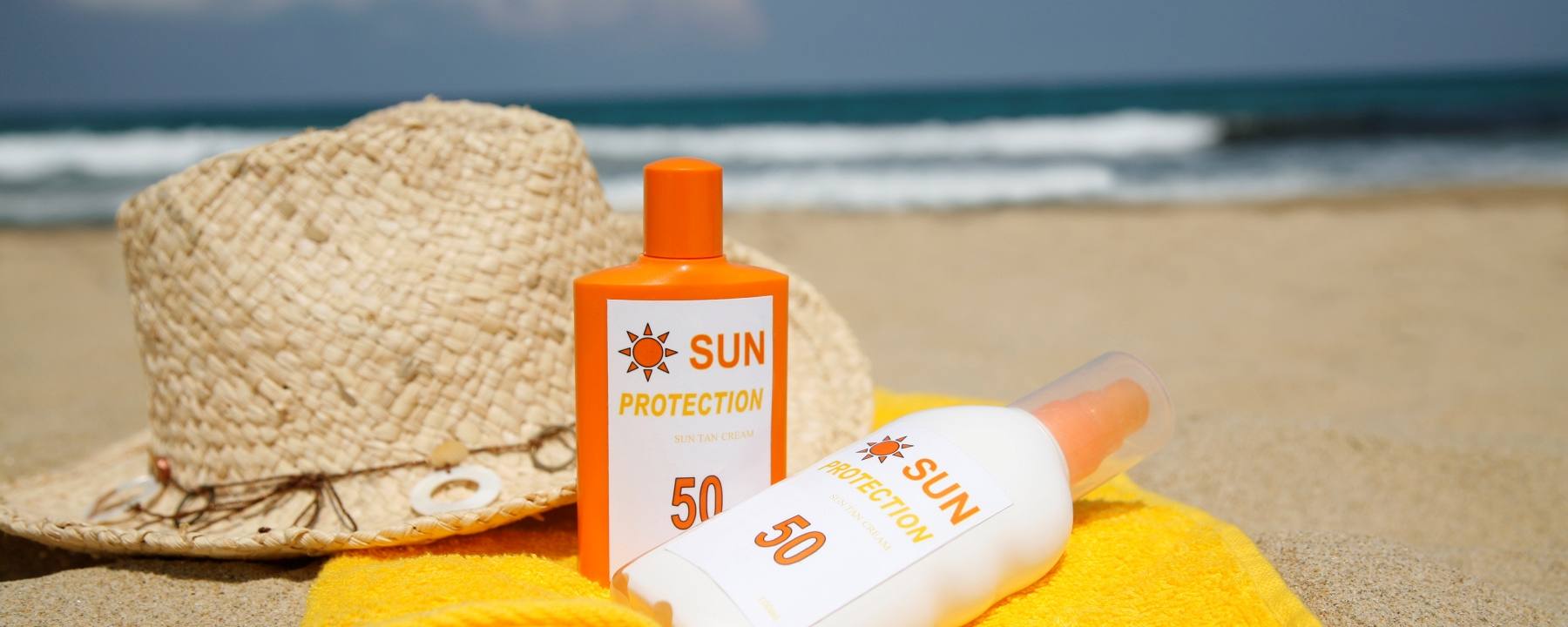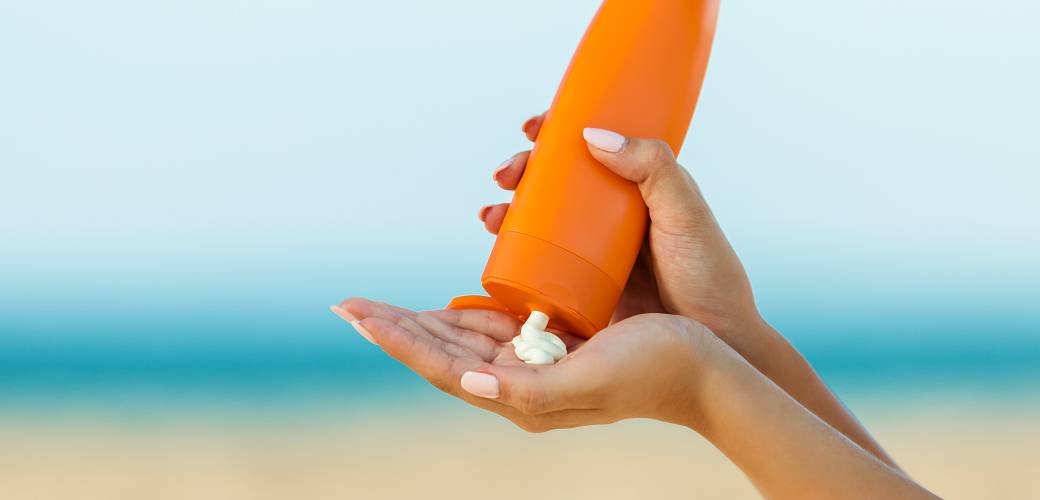
Sun protection
What exactly are SPF, LPF and so on?
When buying sunscreen, the majority of consumers pay most attention to the sun protection factor. This value is tested directly on humans via what is known as an in vivo process. However: A high sun protection factor alone does not mean a sunscreen is good.
The sun protection factor (SPF) on the packaging of a sunscreen is one of the most effective marketing measures to tempt people to buy the product. But what does this information actually tell us? The sun protection factor describes how well the skin is protected from direct and visible damage caused by UV irradiation, i.e. from sunburn, known medically as erythema. This redness of the skin, the first visible sign of skin damage, is caused by UV light within a wave range of 290–400 nm.
But: The widespread assumption that the SPF alone is what protects us against UVB irradiation is WRONG. After all, it is not only UVB rays that cause damage to the skin. Some of the UVA radiation in the intense radiation range of 320–400 nm has also been found to potentially cause sunburn. In fact, almost 15% of the total irradiation that causes erythema (sunburn) is in this range. What's more, an SPF value tells us nothing about protection against skin aging and skin cancer.
The old mnemonic of B=burn, where UVB rays alone were believed to cause damage, is outdated in many respects. Today, we know that both types, UVA and UVB, come with their own risks.
What do the various abbreviations used in conjunction with the sun protection factor mean?
- UVA (400-320 nm) + UVB (320-290 nm)
Areas of electromagnetic radiation in the optical spectrum. Ultraviolet radiation is measured in nanometers. - LPF
Light protection factor - SPF
Sun protection factor - SSF
Sonnenschutzfaktor (SPF in German) - IP
Indice de Protection Solaire - Sun protection index (in French) - FPS
Le Facteur de Protection Solaire (SPF in French)
- ISO
International Organization for Standardization - ISO 24444
Regulation of in vivo determination of sun protection or light protection factor - in-vivo Test
Derived from the Latin "vivus", it means "from life". Reactions are tested on or in a living organism. - in-silico Test
From the Latin "in silico". Results are collected and evaluated by means of computer simulations. Work involving the Sunscreen Simulator is known as an in silico test or an in silico study.
It is important for consumers to know the sun protection factor, as it allows them to calculate the theoretical maximum time they can spend in the sun: by multiplying their natural protection time by the sun protection factor. The natural protection time means the time able to be spent unprotected in the sun before seeing the first signs of sunburn. This varies hugely depending on skin type.
A quick sample calculation: Assume you belong to skin type 2. After approx. 10 min. you see the first signs of redness, and you are using sun protection with an SPF of 20. This means 10 minutes x 20 SPF = 200 minutes. Keep in mind that this is a purely theoretical value. In reality, the time duration will often be shorter, for example because too little product was applied, it faded after swimming, etc. Therefore, do not push the calculated time period to its limits. It is better to only spend 50 percent of that time in the sun.
Application quantity
Please note: The focus here is on sunburn alone and does not include other damage that can lead to longer-term effects. Our skin absorbs all this damage and “remembers” it, so to speak. Years later, effects such as skin aging and skin cancer can become acute.
In general, scientists assume that the majority of consumers do not receive the greatest SPF protection benefit from their sun protection product because they simply do not apply enough of the product to their skin. Research and a series of tests have shown that there is a direct correlation between the quantity applied and the sun protection factor. Assuming around half the recommended quantity is applied, this results in an actual sun protection factor of about 50% of the advertised value.
The SPF is measured in vivo using an application amount of 2 mg/cm2. These are very large quantities that are not applied in real life. A "normal” application amount is only about 1 mg/cm2. This means that in reality the SPF (due to the application quantity) is only about half of the claimed SPF.
Many consumers have learned that the highest possible SPF provides the best possible protection against harmful UV rays, meaning you can stay in the sun for longer. In the past, many manufacturers outbid each other in terms of higher and higher SPF values. 100+ was expected to attract more customers.
However, the SPF can only be seen as an indicator of the level of protection. The degree of UVA protection, on the other hand, indicates the quality of the overall UV protection. To understand what makes a good sunscreen, never forget this simple fact.
As in many areas of sun protection, further research, development and improvements are still being carried out. This includes new regulations and the standardization of information. This led to the 100+ levels being scrapped, with a maximum limit of 50+ being introduced instead.
Want to know how much is required? Watch our brief explanation in the video. Our expert, Myriam, is on hand to provide a very simple example of how much sunscreen you need to use to achieve the promised level of protection.
Watch the videoThis has many benefits, especially from a psychological point of view. A very high SPF can tempt consumers to stay in the sun for too long, or to be careless when applying sunscreen.
The new classification is intended to prevent this:
- SPF 6–10 – Low protection
- SPF 15–20 – Medium protection
- SPF 30–50 – High protection
- SPF 50+ - Very high protection
A combination of effective UVB, UVA and/or broadband filters that provide all-round protection are now ESSENTIAL. Sun protection products must provide protection against sunburn, significantly reduce the risk of skin cancer and prevent UV-related aging. To achieve all this, you need to have a) high protection performance across the entire light spectrum and b) a good and sensible combination of UV filters, oils and other ingredients in the formulation. In other words, a good sunscreen is much more than just a high SPF.
But how do manufacturers and formulators figure out the SPF information for their products? We will discuss this with our colleagues at BASF Grenzach in an upcoming article. What role do standards play? How are SPF and UVA protection tests carried out? What are scientists working on to improve in vivo and in vitro tests? We promise we'll continue to look at everything under the sun.

